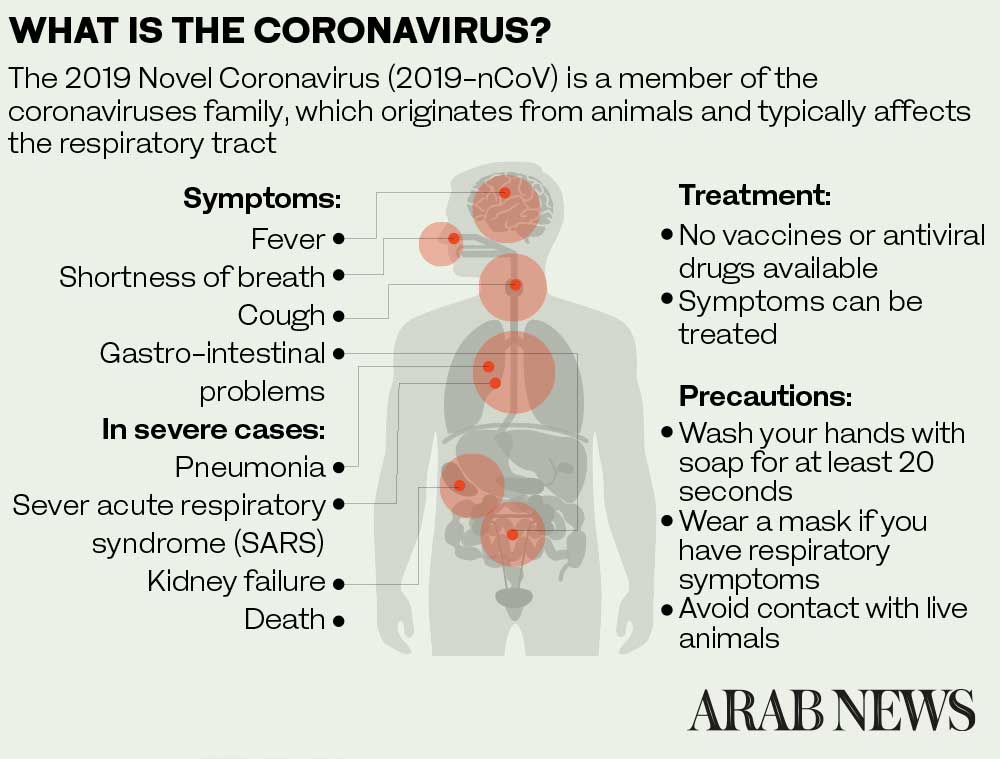The coronavirus is a kind of common virus which is causing infection in the nose, sinuses or upper throat. The most coronaviruses are not dangerous, but some types of them can be serious. This virus was first identified in the 1960s, but it is not known where it comes from. The coronavirus got its name from their crown – like shape. In some cases, the coronavirus can infect both animals and humans. Most coronaviruses spread the same way as other cold – causing viruses do: by touching things, such as doorknobs that infected people have touched; by touching an infected person’s hands or face; through infected people coughing and sneezing. It is noticed that almost everyone gets a coronavirus infection at least once in their life, most likely as a young child. It is noticed that in United States of America, coronavirus is more common in the fall and winter, but every single person can get a coronavirus infection at any time [1].
Contents
The symptoms of most coronaviruses are similar to any other upper respiratory infection, such as
- Fever
- Sore throat
- Coughing
- Runny nose
- Fatigue
- Shortness of breath
There are many cases when people do not know whether they have a coronavirus or a different cold – causing virus, such as rhinovirus. In the most severe cases, the coronavirus infection can lead to pneumonia, kidney failure and severe acute respiratory syndrome.
Health officials are not sure for the source of coronavirus yet or how easily it can spread. This virus is found in many animals, including bats, cats, cattle and camels. In one study, was shown that snakes can be also a source of coronavirus [2]. Also, the coronavirus may be linked to a seafood and live animal market in Wuhan which has been closed. It is believed that the recent outbreak of coronavirus have occurred in a market for illegal wildlife in the Central Chinese City of Wuhan. The WHO and Chinese health authorities are investigating the outbreak of recent coronavirus, which has claimed 17 lives and reportedly infected hundreds. There is no specific treatment for the coronavirus. Doctors are usually giving to their patients a supportive care for their symptoms, such as pain relievers and fluids. Those patients that are hospitalized may need support with the breathing.
The coronavirus can spread from person to person. Health officials have seen that this is happening most often where people are close together and in the health care settings and till that date, 16 health care workers have been infected with coronavirus. The recent risk factors for coronavirus include:
Recent travel to Arabian Peninsula and China: If you have recently traveled to these countries and in a period of 14 days after traveling from them, you develop symptoms, such as shortness of breath or cough, then visit your doctor as soon as possible and do not forget to tell about your recent travel. [3]
Close contact with citizen of Arabian Peninsula and China: If you had a close contact with some citizen of these countries and you develop symptoms, like fever, cough or shortness of breath, then talk with your doctor and notice if your condition has worsened in a period of 14 days, starting from the day you were last exposed to the ill person. [4]
Close contact to a confirmed case of MERS: If you has a contact with a person who has confirmed case of MERS, then you have increased risk of getting coronavirus and you need to see your doctor as soon as possible. [4,5]
There are different types of coronaviruses which vary in the severity of illness they cause and how far they can spread. Currently, there are six recognized types of coronavirus which can infect people. Here are the most common types of coronavirus:
- HKU1 (beta coronavirus)
- OC43 (beta coronavirus)
- 229E (alpha coronavirus)
- NL63 (alpha coronavirus)
The most dangerous, but rare types of coronavirus, include SARS – CoV (severe acute respiratory syndrome), the coronavirus which is responsible for SARS and MERS – CoV, which is the cause for MERS (Middle East Respiratory Syndrome).
References:
[1] IHME COVID-19 Forecasting Team. Modeling COVID-19 scenarios for the United States. Nature Medicine. 2020. Retrieved from www.nature.com/articles/s41591-020-1132-9
[2] Guo H, Luo G, Gao SJ. Snakes could be the original source of the new coronavirus outbreak in China. Scientific American. 2020.
[3] Perveen S, Orfali R, Azam MS, et al. Coronavirus nCOVID-19: A pandemic disease and the Saudi precautions. Saudi Pharmaceutical Journal. 2020;28(7):888-97.
[4] Peeri NC, Shrestha N, Rahman S, et al. The SARS, MERS and novel coronavirus (COVID-19) epidemics, the newest and biggest global health threats: what lessons have we learned? International Journal of Epidemiology. 2020:dyaa033.
[5] Mok CKP, Zhu A, Zhao J, et al. T-cell responses to MERS coronavirus infection in people with occupational exposure to dromedary camels in Nigeria: an observational cohort study. The Lancet. 2020.






i do not think the self isolation time of 14 days is enough to say that the person does not have the virus.